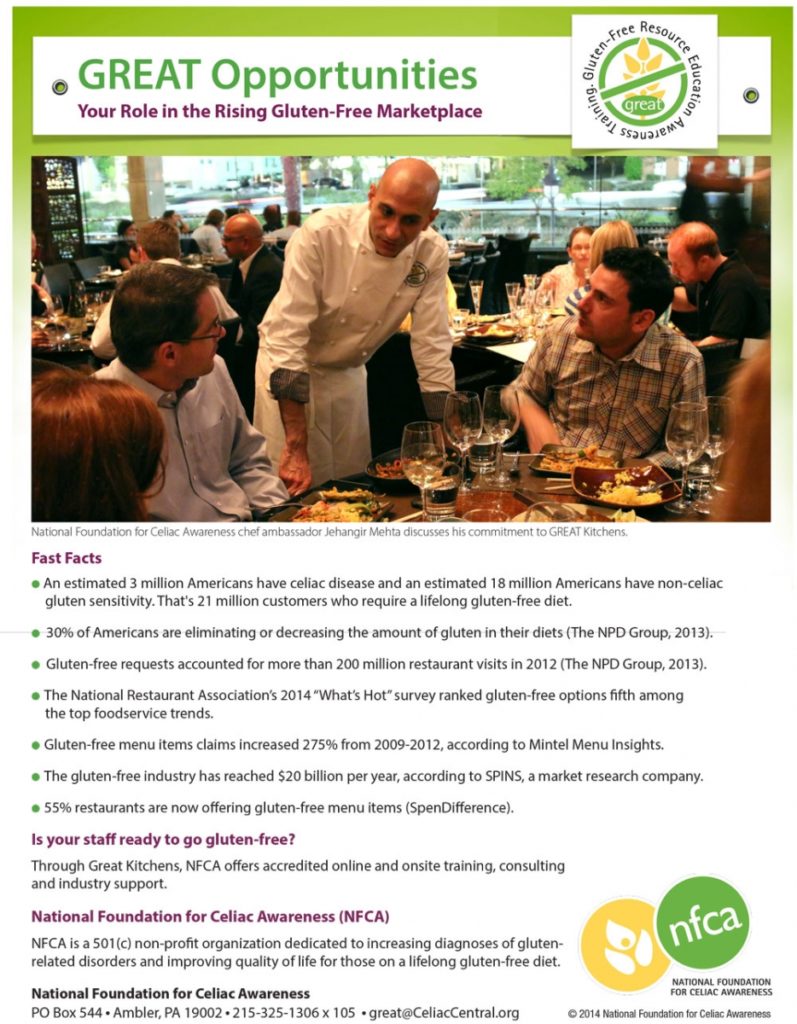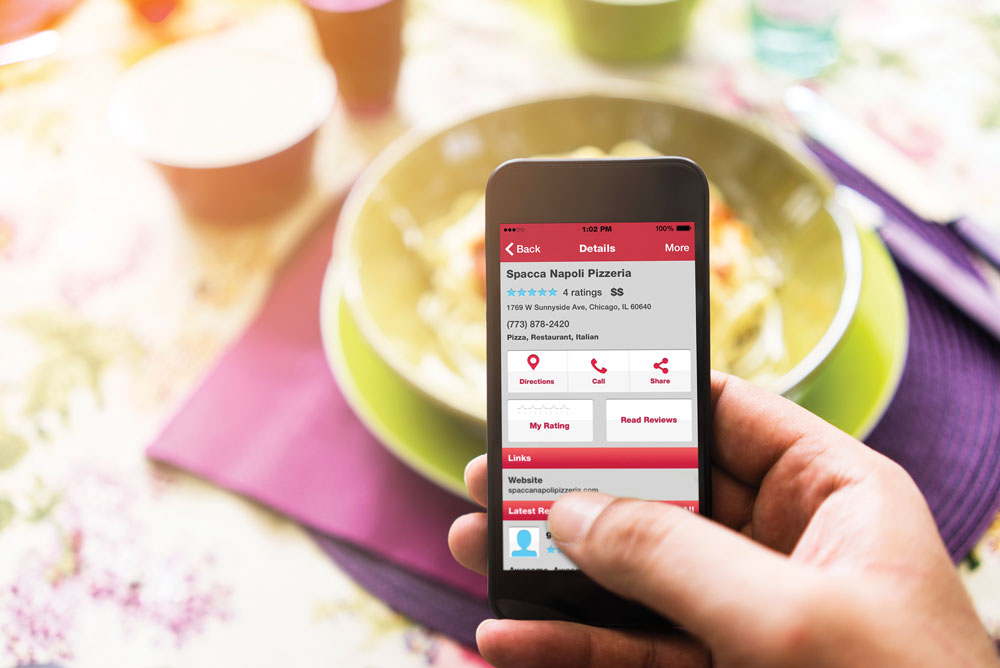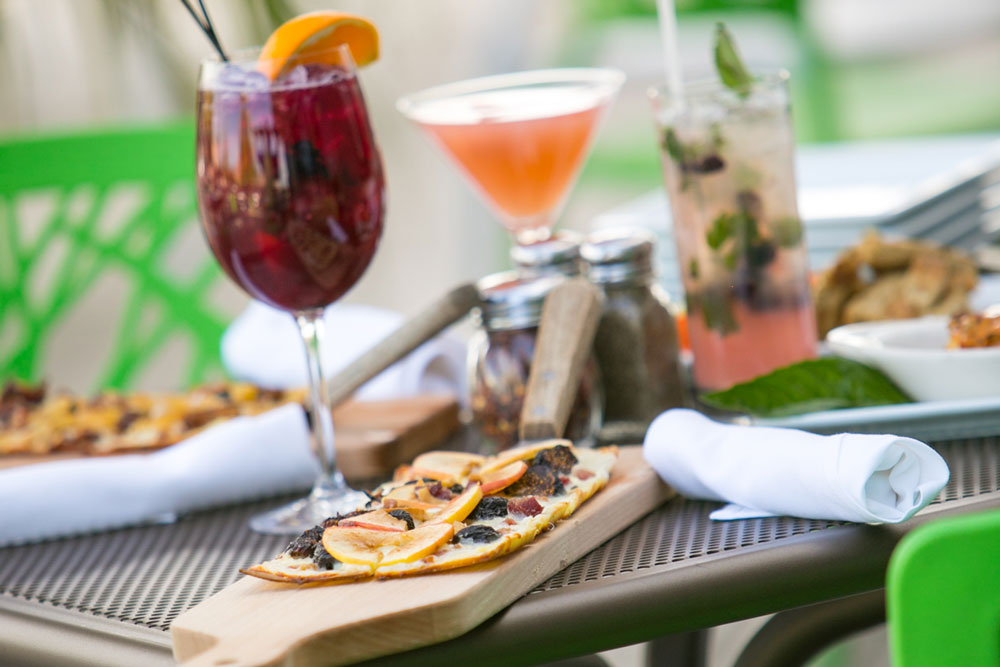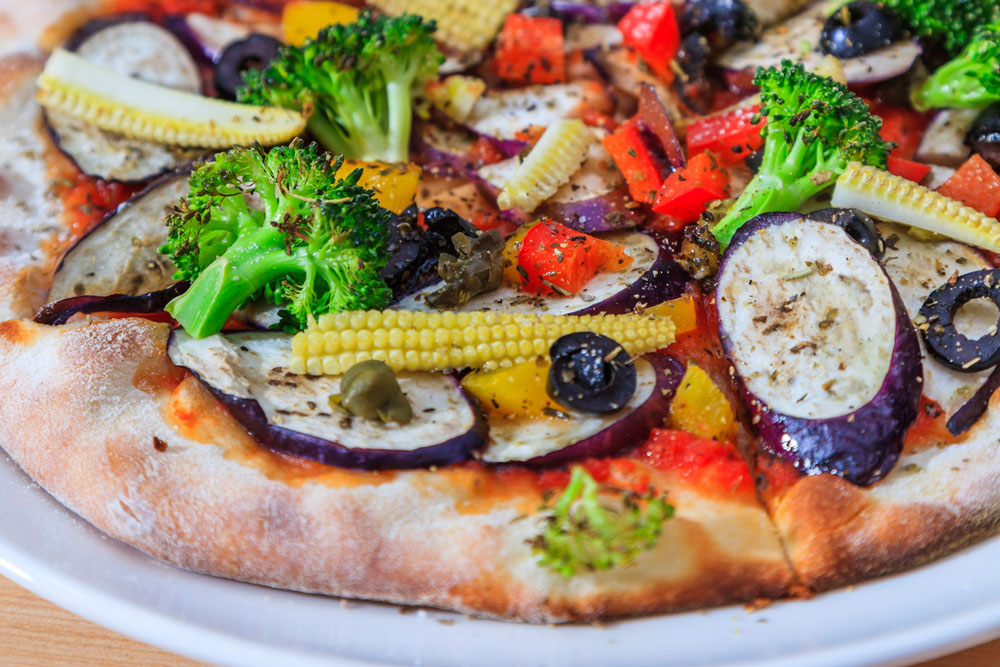So you took the leap and added gluten-free (GF) pizza to your menu. Perhaps you've already experienced some success through word-of-mouth. Unfortunately, positive buzz alone won't maximize sales. Using well-planned marketing tactics and demonstrating your understanding of the GF client base will help ensure even greater success.
Sara Miranda, marketing director of The Gluten-Free Media Group in Downers Grove, Illinois, notes the main concerns of these diners: cross-contamination, knowledgeable waitstaff, clear, easy-to-find gluten-free options—and, perhaps most important, whether the restaurant treats them with respect and makes them feel “normal” despite their special diet. Here are five expert tips that will help you meet all of these needs and more—and create a very loyal new customer base!
Mind Your Menu
Chris Disney, director of operations for Picazzo's Organic Italian Kitchen (picazzos.com), with five locations in Arizona, suggests making your GF menu items stand out with symbols or color coding to denote GF options, or even creating a separate GF menu. “If a pizzeria really wants these menu items to sell, you need to establish consumer confidence,” Disney says. “No matter how you designate the menu items, the guests need to feel safe and know that the items aren't just another profit center.”
For example, Disney says, if you use well-known GF brands, mention them on the menu; you may even be able to use those brands' logos. “It also helps to explain—either on the GF menu or next to a legend if you're using symbols or color coding—what practices and precautions you use to make sure that cross-contamination is minimized as much as possible,” he adds. For example, at Picazzo's, chefs have transformed the base menu to be almost 100% GF, including all sauces, dressings, cheeses, meats and dry goods.
Beckee Moreland, director of the GREAT Kitchens Program at the Ambler, Pennsylvania-based National Foundation for Celiac Awareness, agrees that your menu should be 100% clear in its messaging. If you do offer a separate GF menu, make sure to include it on your website, she advises. Since many customers will research ahead to find GF availability, not posting your GF menu on your website can cost you a lot of customers. “Be clear about your ingredients and preparation practices,” Moreland adds. “And if you do offer a separate GF menu, mention it on your regular menu. Even diners who aren't GF often know someone who is, so it's good advertising within your pizzeria.”
Miranda adds that if you're simply marking items on a regular menu, the abbreviation “GF” is universally understood. But if you offer a separate menu, “make the GF menu esthetically equivalent to your regular menu,” she recommends. “If the rest of your menus are hardcover bound and your GF customers are handed a greasy piece of copy paper, it's not a great first impression.”
 |
|
Posting gluten-free facts on social media or enrolling in a special training program shows that you're committed to creating a safe environment for gluten-free guests. |
Master the Possibilities.
Though Moreland believes variety is less important than executing all menu items safely, she does advocate offering more than just pizza for GF diners. “We're seeing more and more expanding menus because it's easier to get GF products that offer great taste and quality,” she notes. “If you can offer other options, such as appetizers or desserts, that are gluten-free, I'd highly recommend it.”
Moreland points out that if a group is dining out and even one member is GF, the others may shy away from ordering a dessert if that one person can't share the experience. “If you have a signature dish or drink, it's great if you can adapt them to be GF,” she adds. “This allows them to be a part of your brand experience, and they love being accommodated like your 'regular' guests.” Using GF drink mixers or bringing in individually wrapped single-serve desserts are easy and safe ways to accommodate these guests.
Miranda agrees that you shouldn't simply offer GF pizza and neglect the rest of the menu. “GF customers want to feel normal when they come to your restaurant, and just a few small additions can make a huge difference in how your GF menu is perceived,” she explains. These additions can be easy: Use your GF pizza dough to make breadsticks, toss together a salad without croutons, and purchase some GF chocolate chip cookies, Miranda suggests.
“One of the biggest draws on the menu, besides entrees, are GF appetizers and desserts,” Disney concludes. “Even if it's just one item for each menu category, it allows a gluten-intolerant guest to enjoy the full dining experience, and it allows staff to upsell. GF dining is becoming more and more competitive, and those guests are demanding more options in all departments of the menu.”
Get On the Train.
Experts agree that staff training is one of the most important aspects of catering to GF diners. After all, these customers tend to be inquisitive about details such as preparation and ingredients, and if your staff isn't ready to offer knowledgeable, confident answers, potential customers are likely to go elsewhere.
If you don’t feel confident in every staff member's training, train a select few staff members for each shift rather than risk having an employee flub their way through the questions or sound unsure. Miranda notes that when a customer calls ahead with questions about cross-contamination and possibly additional food allergies, having these questions answered by a manager or chef helps instill confidence that the information is accurate and that the customer will be able to eat safely at your pizzeria. For in-depth training, Moreland notes that her organization offers a complete online training course specifically for foodservice, which covers everything from how to prepare GF foods safely to how employees should answer phones.
 |
|
Listing your pizzeria on gluten-free apps is a great (and free) way to ensure that both locals and travelers discover your business. |
Build a Social Life.
Moreland emphasizes that social media and other online outlets are “huge” among the GF community as they seek positive feedback on dining options, so it's wise to use social media to promote your GF items. “Put your GF menu front and center on Facebook, or post 'We're proud to be GF-friendly,'” she recommends. “Then reach out to local GF support groups or even those in the local medical community (try the gastroenterology department at a local medical center), plus local travel guides, GF dining apps and convention centers for travelers who are looking for GF options.”
Miranda agrees that social media and newsletters are a great way to let your current customers know about your GF options. But if you haven't offered them in the past, chances are, your current customer base isn't GF. “Get your restaurant listed on the Find Me Gluten Free app if it isn't already,” she says. “With more than 2.3 million customers across the country looking for businesses that offer GF options, it's a great free way to promote yourself. You can also do some paid targeted advertising on Facebook so that you're reaching people in your area on a GF diet.”
Disney sees social media as a superpowered version of word-of-mouth—and a stage where you can gain momentum on a trending topic such as GF. But Picazzo's uses social media to express a mix of content, often providing education. “This is where you can teach people about the great things your company does and give them some small bits of information they may not have been aware of,” he says. “By educating, you're selling in an informative, less invasive way.”
Toward that end, Moreland recommends posting occasional GF-related tidbits—such as “Did you know…” followed by an interesting stat to share (and demonstrate) your knowledge of the issue.
Finally, as a nonvirtual reminder, mention that you offer GF options in all recorded phone messages, such as on-hold messages or the message callers hear when your store is closed.
 |
|
Picazzo's offers a range of gluten-free menu items, including beverages and small bites. |
Engage in Event Planning.
Events and in-store sampling show that you genuinely care about this community and its thoughts on your GF menu items. “Offer samples during your slower times if you want to stay on-site,” advises Disney. “Off-site, seek out GF expos, support groups or community groups.” Picazzo's has participated in GF expos with local celiac groups—and, says Disney, because GF customers are a tightly connected group, sampling product at their events is a great way to earn new business and trust.
If you're just introducing new GF menu options, host a GF sampling event at your restaurant to let the community know about your offerings, Miranda says, and exhibit at gluten- and allergen-free expos to reach thousands of potential customers, have them try your pizza and educate them on what your restaurant has to offer (visit gfafexpo.com to find an expo near you). If you're thinking of offering a new GF item or aren't sure about the GF crust you've developed, use sampling events to get priceless feedback in exchange for a few freebies.
Finally, advises Moreland, bring in a speaker to talk about GF topics while catering the event with pizza. You can also host a fundraiser for celiac awareness and research (Celiac Awareness Month is in May) or invite your local celiac support group to have a meeting at your pizzeria. By reaching out to those influential GF customers, the word will spread—and you'll establish yourself as not only a provider, but a true advocate, in the GF community.
|
Developing a Process |
|
The more your servers and other staff members know about your GF menu, the better they can explain it to customers—and put gluten-intolerant guests at ease, says Chris Disney, director of operations for Arizona-based Picazzo's Organic Italian Kitchen. “Training is monumental in the success of offering GF menu items, so, for training, Picazzo's has taken a dual approach,” he says. “The first is based on the processes, and the other is based on staff awareness of the effects of gluten reactions.” The process portion identifies four critical stages, from when a guest orders food to when they receive it. Make sure the process has checkpoints to ensure higher order accuracy. Step 1: During communication (on the phone or face-to-face) between the guest and the staff member, write down orders and repeat the Step 2: At the POS terminal, where the order is entered into the computer and sent to the kitchen, scroll through the order for accuracy and make sure any special requests are entered. Step 3: If any confusion arises when the kitchen receives the ticket, get confirmation from the order taker. Kitchen staff must change gloves, then use color-coded utensils and proper ingredients. Step 4: Once the food is prepared and ready to be brought to the guest, the server should double-check with the kitchen to confirm the item is GF. In fact, the server should read the ticket again and make sure that the dish fulfills all special requests. The second portion of training focuses on staff awareness. “We put a lot of focus on overall menu knowledge, but, more importantly, we want the staff to be aware of what celiac disease and gluten intolerance are,” Disney says. “We want them to know what the guests have to worry about, what they go through when they consume gluten, how fragile this piece of business is, and that serving the wrong item can lead to serious illness.” Disney believes that if the staff understands the severity of cross-contamination or miscommunication, they'll be more compassionate toward the guest's dietary restrictions. |















